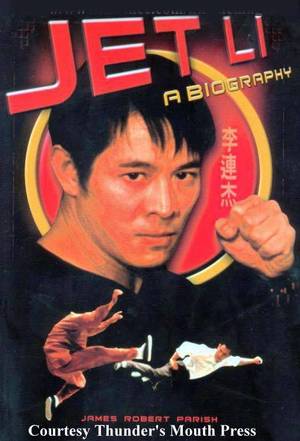 Despite an apparent linear continuity in dealing with every movie Li's made, James Robert Parish doesn't make a mere list detailing their faults or merits. His work is much deeper since he systematically reveals ups and downs of a feature production, he adds a plot summary not exempt of spoilers, he specifies the dates of release (in HK and in the USA) and the box office grosses and successes. He usually finishes it off by describing the audience and critic reception adding various American journalist quotations. Sometimes Parish fails to make his point crystal clear since he may dilute his analysis of the situation with so much wealth of detail. But this thorough approach is logical and serves well the author demonstration. Despite an apparent linear continuity in dealing with every movie Li's made, James Robert Parish doesn't make a mere list detailing their faults or merits. His work is much deeper since he systematically reveals ups and downs of a feature production, he adds a plot summary not exempt of spoilers, he specifies the dates of release (in HK and in the USA) and the box office grosses and successes. He usually finishes it off by describing the audience and critic reception adding various American journalist quotations. Sometimes Parish fails to make his point crystal clear since he may dilute his analysis of the situation with so much wealth of detail. But this thorough approach is logical and serves well the author demonstration.
Li sees each movie as an excuse to a new challenge and he is motivated by new experiences, by meeting new people or to improve his acting skills. During the production of Once Upon A Time In China, director Tsui Hark unexpectedly brought him new perspectives on his acting approach, which helped him to improve his performances. The chronological progress is therefore logical since it perfectly follows Li's progression in his private and professional life.
To support this private and intimate approach, a multitude of Jet Li's own words are quoted in addition to various film critic review excerpts of Li's different features. Again, it leads the reader to understand Li's own reflections on his career ups-and-downs. For instance, repeated failures to find a proper project, multiple injuries or witnessing Hong-Kong people misbehaving with Mainlanders made Li seriously think of giving up. But, Parish demonstrates that Li worked as hard to become an accomplished movie person (in production, acting, action choreography, script-writing and even film direction) as he did to become a Wu Shu expert, in spite of some misfortune.
Parish knows that his readership may be a mix of Li's fanatics and mere moviegoers. He takes then the opportunity to be educational, but never boring. He explains indeed what are the typical constraints in the HK movie productions and the local film genres and techniques (e.g. Wu Xia Pian or Kung Fu, and wire works). This has the double advantage to never lose the reader into the complexity of a chaotic Chinese film production system, which is miles away, in its conception, from the Hollywood asepticized methods. And it helps the reader to contemplate Li's merits in dealing with such traditional and demanding system and still displaying his tremendous skills whilst promoting Chinese cultural heritage. The tough production of Hong-Kong/China co-production Shaolin Temple 3: Martial Arts From Shaolin (by Liu Chia Liang, 1986) is a perfect example.
This comprehensive biography is obviously recommended. Captivating explanations are cleverly illustrated by various meaningful anecdotes and quotations. Unfortunately, Parish's words failed to be beautifully illustrated by gorgeous and attractive colour pictures. Despite their originality, thirty odd B&W vaguely framed pics don't quench the fan eyes, thirsty for magnificent photos of his/her hero. On top of that, the cover is a clumsy collage, associating Jet Li's face to a fist and a 'kicking-ass' session in a black background. This is a simplistic association of ideas to depict Li's personality and this gives nothing exciting nor attractive to the proper fans, not to mention the curious moviegoers, to look for in bookshops. They have the right to expect better especially as exuberant aesthetics and graphic virtuosity are the HK film industry trademarks; a film industry that has generated, at the end of the day, the Jet Li's phenomenon.
Written by Thomas, June 2002. |
